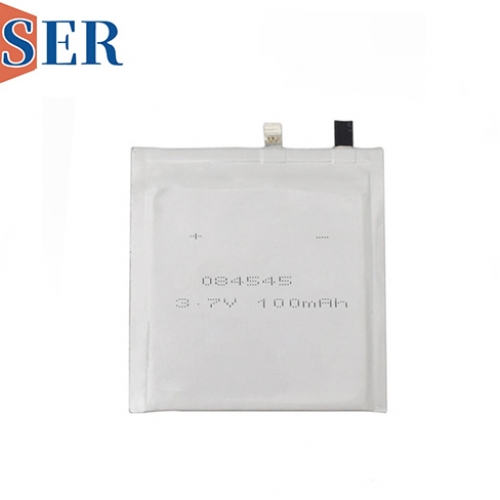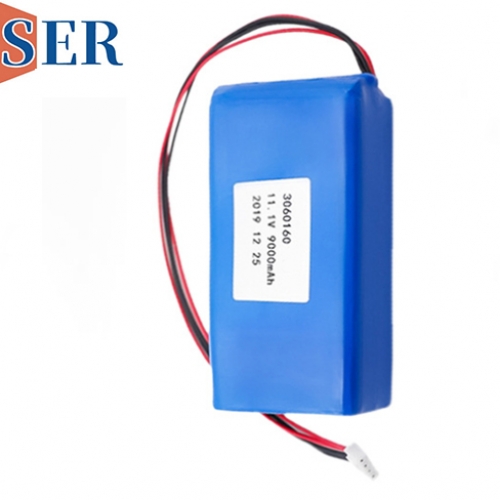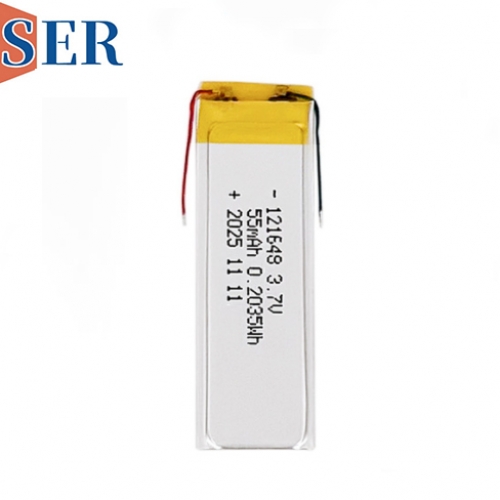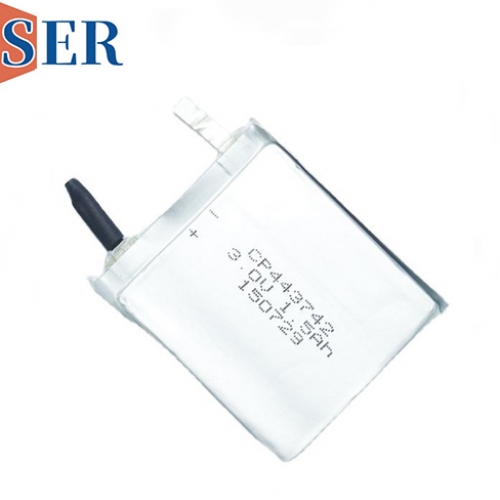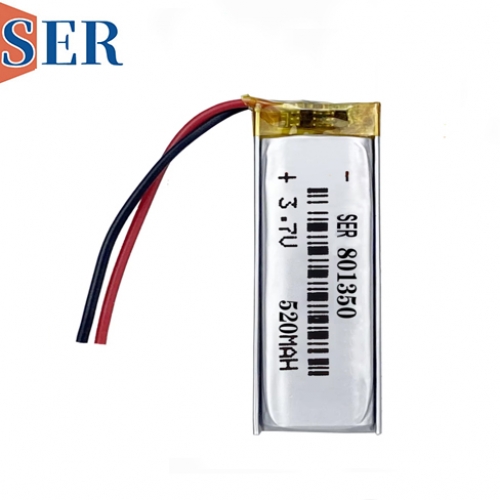CP502440 Ultra Thin Lithium Battery 3.0V 1200mAh for RFID, Monitoring, and Tracking Systems
CP502440 Ultra Thin Lithium Battery 3.0V 1200mAh for RFID, Monitoring, and Tracking Systems
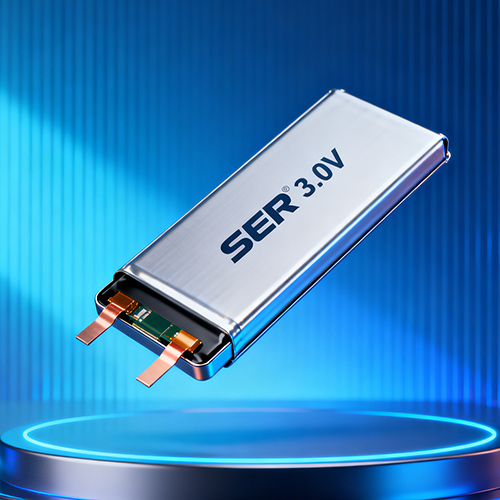
1. Introduction
In the era of the Internet of Things (IoT), where seamless connectivity, real-time data collection, and remote monitoring have become the backbone of numerous industries, the demand for reliable, compact, and long-lasting power sources has never been higher. Among the various components that enable IoT functionality, ultra thin battery play a critical role—especially in applications where space is constrained, and frequent battery replacement is impractical or costly. The CP502440 Ultra Thin Lithium Battery emerges as a game-changer in this landscape, specifically designed to meet the rigorous requirements of RFID tags, temperature and humidity monitoring devices, remote reading systems, AMR (Automatic Mobile Robot) positioning tools, and identification cards. As a non-rechargeable pouch battery with a nominal voltage of 3.0V and a capacity of 1200mAh, it combines ultra-thin dimensions, high energy density, and stable performance to power the next generation of IoT and tracking technologies.
This article delves into the technical specifications, core advantages, application scenarios, performance characteristics, and market significance of the CP502440 Ultra Thin Lithium Battery. By exploring its unique design features and how it addresses the challenges of modern electronic devices, we aim to provide a comprehensive understanding of why this battery has become a preferred choice for engineers, manufacturers, and industry professionals in sectors ranging from logistics and healthcare to retail and industrial automation.
2. Technical Specifications of the CP502440 Ultra Thin Battery
To fully appreciate the capabilities of the CP502440, it is essential to examine its technical parameters in detail. These specifications not only define the battery’s performance but also determine its suitability for various applications.
2.1 Basic Electrical Parameters
Nominal Voltage: The CP502440 operates at a nominal voltage of 3.0V, which is a standard voltage level for LiMNO2 battery. This voltage is ideal for powering low-to-medium power IoT devices, such as RFID tags and small monitoring sensors, as it provides a stable power supply that aligns with the voltage requirements of most integrated circuits (ICs) used in these devices. Unlike some other battery chemistries that experience significant voltage drops as they discharge, lithium primary batteries maintain a relatively flat discharge curve, ensuring that the CP502440 delivers consistent voltage throughout its operational life.
Capacity: With a rated capacity of 1200mAh, the CP502440 offers a substantial amount of energy storage for its size. Capacity is a critical parameter for applications that require long-term operation without battery replacement—such as RFID tags used in asset tracking, which may need to function for years in harsh environments. The 1200mAh capacity ensures that the battery can power devices with moderate power consumption (e.g., 10μA to 100μA for RFID tags) for extended periods, reducing maintenance costs and operational downtime.
Energy Density: Energy density, measured in Wh/kg or Wh/L, is a key metric for ultra-thin batteries, as it reflects how much energy can be stored per unit of weight or volume. The CP502440, leveraging advanced lithium chemistry and thin-film technology, achieves a high energy density that surpasses many traditional button-cell or cylindrical batteries of similar dimensions. This high energy density is particularly important for devices like AMR positioning modules and identification cards, where space is at a premium, and every cubic millimeter of volume must be optimized for both functionality and power storage.
2.2 Physical Dimensions and Form Factor
As its name suggests, the ultra-thin design is one of the most distinguishing features of the CP502440. The battery follows the naming convention for pouch batteries, where the numbers “502440” represent its dimensions: approximately 5.0mm in thickness, 24mm in width, and 40mm in length. This compact form factor makes it ideal for integration into thin, lightweight devices that cannot accommodate bulkier battery types. For example, RFID tags used in retail inventory management are often attached to product packaging or clothing, requiring a battery that is thin enough to avoid adding bulk or altering the appearance of the product. Similarly, identification cards—such as employee ID cards with embedded RFID chips for access control—need a battery that can fit within the standard card thickness (typically 0.76mm to 1.0mm), and the CP502440’s thin profile enables seamless integration without compromising the card’s flexibility or durability.
The CP502440 is packaged in a flexible pouch, which offers several advantages over rigid battery casings. The pouch material, usually a composite of aluminum foil and polymer films, provides excellent barrier properties against moisture and oxygen, protecting the battery’s internal components from environmental damage. Additionally, the flexible pouch allows for slight variations in shape, making it easier to integrate into devices with non-standard or curved surfaces—such as the housing of temperature and humidity sensors used in cold chain logistics, which may have irregular shapes to fit into shipping containers.
2.3 Chemical Composition and Safety Features
The CP502440 is a lithium primary (non-rechargeable) battery, which uses lithium metal as the anode and a cathode material (typically lithium cobalt oxide, lithium manganese oxide, or a mixed oxide) paired with an organic electrolyte. This chemistry is chosen for its high voltage, long shelf life, and stable performance across a wide temperature range. Unlike lithium-ion rechargeable batteries, lithium primary batteries do not require a complex charging circuit, which simplifies the design of the devices they power and reduces overall costs.
Safety is a top priority in battery design, especially for devices that are used in close proximity to humans or in critical applications (e.g., healthcare monitoring devices). The CP502440 incorporates several safety features to prevent common battery-related issues, such as overheating, short-circuiting, and leakage. These features include:
Overcurrent Protection: The battery’s internal structure is designed to limit the maximum current output, preventing damage to the battery and the connected device in the event of a short circuit.
Leakage Resistance: The pouch material’s hermetic seal and the use of stable electrolyte formulations minimize the risk of electrolyte leakage, which can corrode the device’s components and cause malfunctions.
Temperature Stability: The CP502440 operates reliably within a wide temperature range, typically from -20°C to 60°C (and in some cases, from -40°C to 85°C for industrial-grade versions). This temperature tolerance is crucial for applications like cold chain monitoring, where batteries may be exposed to freezing temperatures for extended periods, or outdoor AMR positioning, where batteries may experience high temperatures in summer.
3. Core Advantages of the CP502440 Ultra Thin Lithium Battery
The CP502440 stands out from other battery options in the market due to a combination of unique advantages that address the specific needs of IoT, RFID, and tracking systems. These advantages not only enhance the performance of the devices it powers but also provide practical benefits for manufacturers and end-users.
3.1 Ultra-Thin and Lightweight Design
In today’s device landscape, “thin is in”—and for good reason. Many modern electronic devices, such as RFID tags, smart cards, and miniaturized sensors, are designed to be unobtrusive, portable, or integrated into existing structures. The CP502440’s ultra-thin profile (as low as 5.0mm) and lightweight construction (typically weighing less than 10g) make it easy to integrate into these devices without adding unnecessary bulk or weight. For example, in the retail industry, RFID tags attached to clothing must be thin enough to avoid being felt by consumers or damaging the fabric. The CP502440’s thin design ensures that the tag remains discreet, while its lightweight nature prevents it from altering the drape or fit of the clothing. Similarly, in healthcare, wearable monitoring devices (such as those used to track patient vital signs) require batteries that are lightweight to ensure patient comfort—another area where the CP502440 excels.
3.2 Long Operational Life and Shelf Life
For applications that require long-term deployment, the operational life of the battery is a critical factor. The CP502440’s lithium primary chemistry provides an impressive operational life, often exceeding 5 years in low-power devices like RFID tags. This is due to the battery’s low self-discharge rate—lithium primary batteries typically have a self-discharge rate of less than 1% per year, meaning that even if the device is not in active use, the battery retains most of its capacity. This long shelf life is particularly valuable for manufacturers who stockpile batteries or devices, as it ensures that the products remain functional for extended periods before deployment. For example, a logistics company that pre-installs RFID tags on shipping containers may store the tags for months before using them; the CP502440’s long shelf life guarantees that the tags will still have sufficient power when they are finally deployed.
3.3 Stable Performance Across Harsh Environments
Many IoT and tracking devices operate in harsh environments, such as industrial warehouses, outdoor settings, or cold chain facilities, where they are exposed to extreme temperatures, humidity, vibration, or dust. The CP502440 is engineered to withstand these conditions, ensuring stable performance even in challenging circumstances. As mentioned earlier, the battery operates within a wide temperature range, from -20°C to 60°C (or higher for industrial versions), making it suitable for use in both freezing cold and hot environments. Its resistance to moisture and oxygen (thanks to the hermetic pouch seal) prevents corrosion and leakage, even in high-humidity settings like food processing plants or coastal warehouses. Additionally, the battery’s robust construction enables it to withstand moderate vibration and shock, which is important for devices mounted on AMRs or vehicles that move frequently.
3.4 Cost-Effectiveness and Easy Integration
Despite its advanced features, the CP502440 is a cost-effective power solution for manufacturers. As a non-rechargeable battery, it eliminates the need for expensive charging circuits and components, reducing the overall cost of the device. Additionally, its high energy density means that fewer batteries are required to power a device (or a single battery can power the device for longer), further lowering costs. The battery’s standard dimensions and flexible pouch design also make it easy to integrate into existing device designs, minimizing the need for costly modifications to the device’s housing or circuitry. For example, a manufacturer of temperature monitoring sensors can easily replace an older, bulkier battery with the CP502440 without redesigning the sensor’s PCB (printed circuit board) or housing, saving time and development costs.
4. Application Scenarios of the CP502440 Ultra Thin Lithium Battery
The CP502440’s unique combination of technical specifications and core advantages makes it suitable for a wide range of applications, particularly in the fields of RFID, monitoring, remote reading, and tracking. Below are detailed explorations of its key application scenarios, highlighting how it addresses the specific needs of each industry.
4.1 RFID Tags: Asset Tracking, Retail, and Logistics
Radio-Frequency Identification (RFID) technology is widely used for asset tracking, retail inventory management, and logistics, as it enables wireless identification and data capture of objects. RFID tags can be either passive (powered by the radio frequency signal from the reader) or active (powered by a battery). Active RFID tags offer several advantages over passive tags, including longer read ranges (up to 100 meters), the ability to store more data, and the option to transmit data in real-time. However, active RFID tags require a reliable battery that can power their transmitters and sensors for extended periods—and the CP502440 is the perfect fit.
In retail inventory management, active RFID tags powered by the CP502440 allow retailers to track the location of products in real-time, reducing stockouts and overstocking. The battery’s long operational life (up to 5 years) ensures that the tags do not need to be replaced frequently, even in high-turnover retail environments. Additionally, the tag’s ultra-thin design makes it easy to attach to clothing, electronics, or other products without altering their appearance.
In logistics and supply chain management, active RFID tags with the CP502440 battery are used to track shipping containers, pallets, and packages. The battery’s resistance to extreme temperatures and moisture ensures that the tags function reliably during transit, whether the goods are being shipped across hot deserts or cold polar regions. The real-time data transmission enabled by the active tag (powered by the CP502440) allows logistics companies to monitor the location and condition of goods, improving efficiency and reducing the risk of lost or damaged shipments.
4.2 Temperature and Humidity Monitoring Devices: Cold Chain, Healthcare, and Food Safety
Temperature and humidity monitoring is critical in industries such as cold chain logistics (for pharmaceuticals and food), healthcare (for storing vaccines and medical supplies), and food safety (for ensuring the quality of perishable goods). These monitoring devices typically consist of a sensor, a data logger, and a battery—and the CP502440’s stable performance and long life make it an ideal power source.
In the cold chain industry, monitoring devices are used to track the temperature of vaccines, blood products, and frozen food during storage and transit. These devices must operate reliably at temperatures as low as -40°C (for some industrial-grade versions) and as high as 60°C, and the CP502440’s wide temperature range ensures that it can power the devices in these extreme conditions. The battery’s long operational life (up to 3-5 years) means that the monitoring devices do not need to be serviced or have their batteries replaced during the typical lifespan of a cold chain shipment (which can range from a few days to several months).
In healthcare facilities, temperature and humidity monitoring devices are used to maintain the integrity of medical supplies, such as vaccines stored in refrigerators or surgical instruments stored in sterile environments. The CP502440’s low self-discharge rate and leakage resistance ensure that the monitoring devices remain functional even if they are not checked frequently, providing healthcare workers with peace of mind that the supplies are being stored in optimal conditions.
4.3 Remote Reading Systems: Utility Meters, Water Meters, and Gas Meters
Remote reading systems, also known as automatic meter reading (AMR) systems, are used to collect data from utility meters (electricity, water, gas) without the need for manual intervention. These systems typically consist of a meter with a sensor, a wireless transmitter, and a battery—and the CP502440’s high energy density and long life make it suitable for powering these devices.
Utility meters are often installed in hard-to-reach locations, such as underground vaults, rooftop cabinets, or remote rural areas, making battery replacement a time-consuming and costly process. The CP502440’s long operational life (up to 5-7 years) ensures that the remote reading systems can operate for extended periods without battery replacement, reducing maintenance costs for utility companies. Additionally, the battery’s stable performance in harsh environments (e.g., high humidity in underground vaults or extreme temperatures on rooftops) ensures that the remote reading systems do not experience downtime, allowing utility companies to collect accurate data consistently.
For example, a water utility company using remote reading systems powered by the CP502440 can collect water usage data from meters in residential and commercial buildings wirelessly, eliminating the need for meter readers to visit each location. This not only saves time and labor costs but also reduces the risk of human error in data collection.
4.4 AMR Positioning Systems: Industrial Automation, Warehouses, and Smart Factories
Automatic Mobile Robots (AMRs) are used in industrial automation, warehouses, and smart factories to transport goods, perform inspections, and assist with assembly tasks. AMRs rely on positioning systems (such as GPS, LiDAR, or RFID) to navigate their environment, and these positioning systems require a reliable battery to function—especially in cases where the AMR’s main battery may not power the positioning system continuously.
The CP502440’s ultra-thin design and high energy density make it ideal for integration into the positioning modules of AMRs. For example, an AMR used in a warehouse may have a positioning module that uses RFID tags placed on the floor to navigate. The CP502440 can power this positioning module for extended periods, ensuring that the AMR can navigate accurately without interruptions. Additionally, the battery’s resistance to vibration and shock (from the AMR’s movement) ensures that the positioning system remains functional even in dynamic warehouse environments.
In smart factories, AMRs are used to transport components between assembly lines, and their positioning systems must be highly reliable to avoid collisions with other robots or equipment. The CP502440’s stable performance and long life ensure that the positioning systems do not fail, reducing the risk of production delays and improving overall factory efficiency.
4.5 Identification Cards: Access Control, Employee IDs, and Smart Cards
Identification cards, such as employee ID cards, access control cards, and smart cards, are increasingly incorporating electronic components (such as RFID chips, magnetic stripes, or displays) to enhance their functionality. These electronic components require a battery to power them, and the CP502440’s ultra-thin design makes it suitable for integration into standard-sized ID cards.
In access control systems, ID cards with embedded RFID chips are used to grant access to buildings, rooms, or equipment. The CP502440 can power the RFID chip in the card, enabling it to transmit a signal to the access control reader. The battery’s long operational life (up to 5 years) ensures that the card remains functional for the typical lifespan of an employee ID card, reducing the need for frequent card replacements. Additionally, the card’s thin profile (maintained by the CP502440’s ultra-thin design) ensures that it is easy to carry in a wallet or badge holder.
In smart cards (such as transit cards or payment cards with contactless functionality), the CP502440 can power additional features, such as a small display that shows

